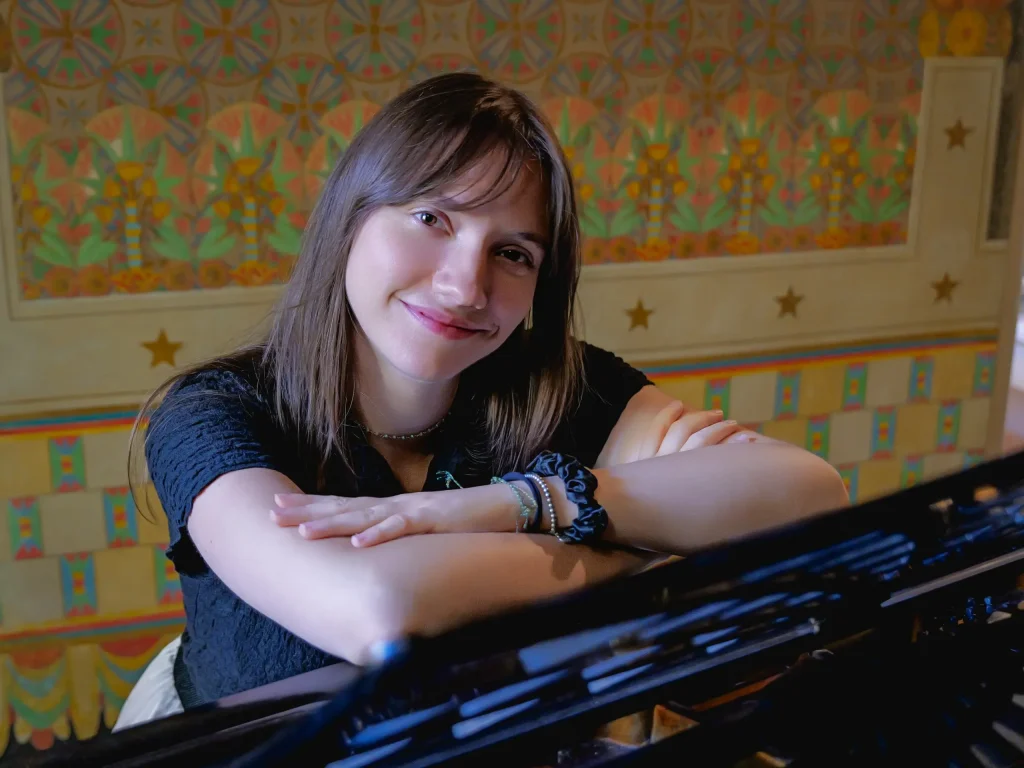In 1942, Williams divorced her husband and left his group, returning to Pittsburgh. She was followed by her colleague, trumpeter Harold “Shorty” Baker, with whom she formed an ensemble that included Art Blakey on drums. After a gig in Cleveland, Williams and the band traveled to New York City and then to Baltimore, where she and Baker got married. Shortly afterward, she left Baker and the group and returned to New York.
Le collaborazioni presso il Café Society e il periodo newyorkese
In the “Big Apple,” she took a job at the nightclub Café Society Downtown, located in Greenwich Village. Once she became fully integrated into the venue’s resident group of musicians, she found herself alongside singers like Billie Holiday and pianists like Teddy Wilson and Hazel Scott. The latter was another female pianist, often portrayed by the press as a rival to Mary Lou, but in truth, she became a great spiritual companion and friend. In a review of Mary Lou’s New York debut, Time magazine noted that her playing style was what one would expect from “strong and vigorous black male musicians” like James P. Johnson. Instead, seated at the piano was a woman who “wasn’t selling a pretty face, a revealing neckline, or swing adaptations of Bach or Chopin. She played the blues, stomps, and boogie-woogie.”
The pianist then launched a weekly radio show called Mary Lou Williams’s Piano Workshop. In addition, her New York period saw her collaborating with the pioneers of the emerging bebop movement: Dizzy Gillespie, Charlie “Bird” Parker, and Thelonious Monk, acting as both their mentor and “guardian angel.” In 1945, she composed what is now considered one of her most celebrated works, infused with classical music influences: “Zodiac Suite,” consisting of twelve parts, each corresponding to a zodiac sign. She dedicated its meaning to some of her jazz colleagues, including Billie Holiday and Art Tatum.
Recalling her experiences in New York, she stated in the British music magazine Melody Maker: “During this time, Monk and the boys would come to my apartment every morning around four or pick me up at the Café after my last show. Then we would continue playing and exchanging ideas until noon […].”
Gambling and the beginning of her charity work
During a break from performing while exploring New York in the late 1940s, Williams succumbed to the dazzling yet deceptive allure of gambling, leading to a lasting addiction and significant financial losses. To distance herself from this, she began dedicating herself to charity and aiding friends and musicians in need, particularly those struggling with drug addiction: she took them into her home, cared for them, and provided them with food. Firmly believing in the power of music, she played for them and offered free concerts in public spaces.
Suggested listening: Virgo, from Zodiac Suite:
…To be continued…
Don’t miss the next article to discover the final part of Mary Lou Williams’s magnificent and tumultuous musical life.

